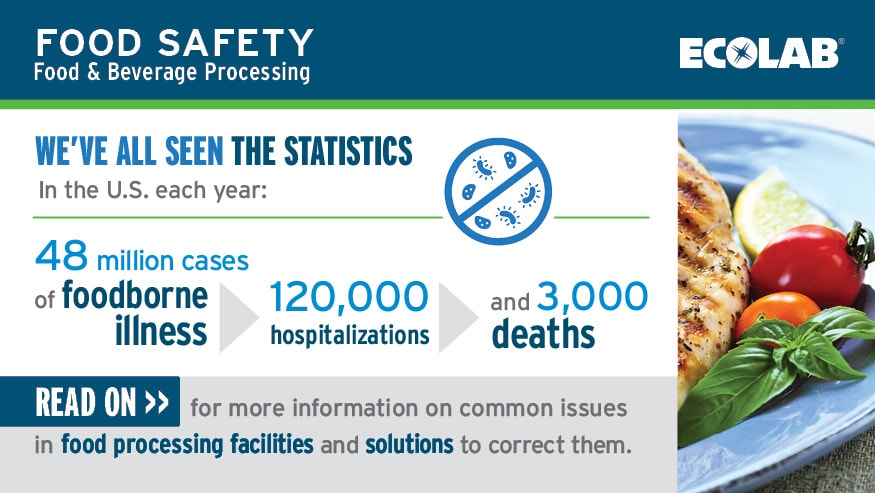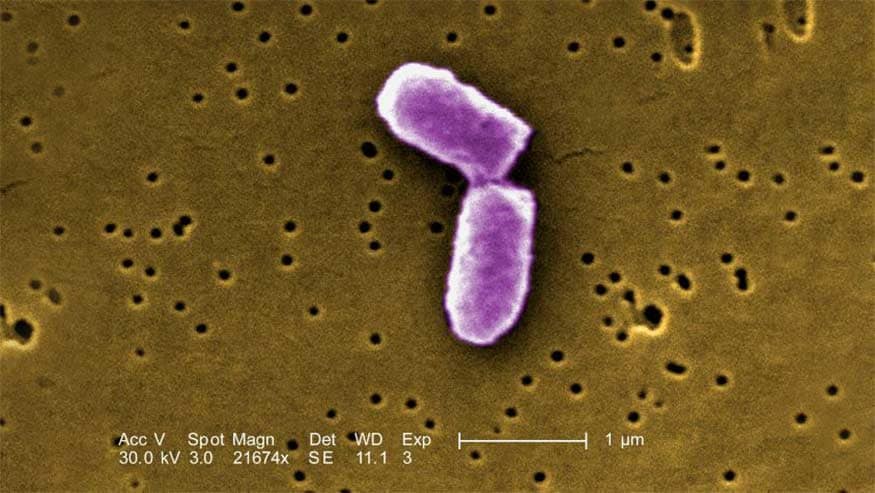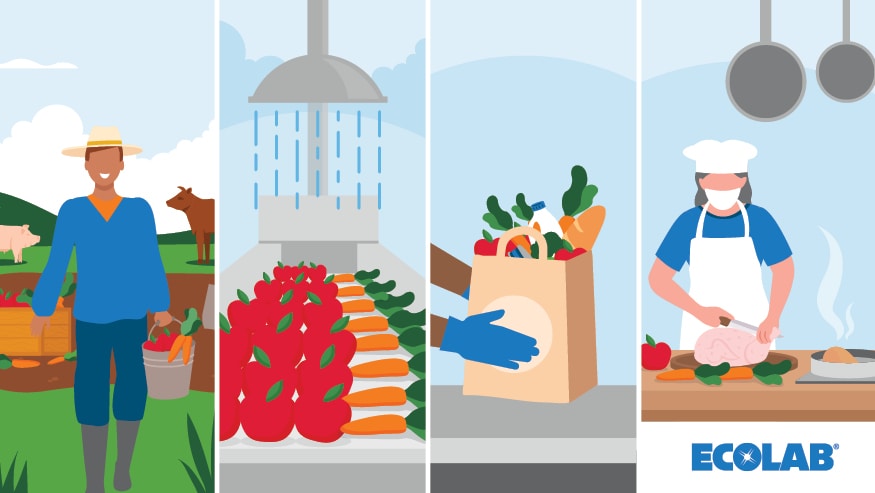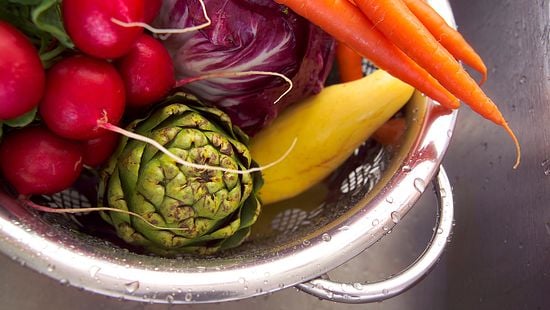Reduce Common Foodborne Illness Risks

We’ve all seen the statistics. There are an estimated 48 million cases of foodborne illnesses in the U.S. each year, with 120,000 hospitalizations and 3,000 deaths. Worldwide, the numbers are an astounding 600 million cases and 420,000 deaths.
According to the U.S. CDC, the most common contributing factors to foodborne illness are unsafe supplier sources, improper holding, inadequate cooking, poor personal hygiene and contaminated equipment and environmental surfaces.
Foodborne illness risks associated with poor personnel hygiene and contaminated equipment and environmental surfaces are the root cause of 38% of all foodborne illness cases each year, and many of these cases can be prevented through Good Manufacturing Practices (GMPs).
Have you reviewed your GMPs lately? Have you evaluated your operational and environmental conditions to ensure you are doing all you can to produce safe foods? Read on for more information on common issues in food processing facilities and solutions to correct them.
What do we mean by "food safety"?
Food safety is the application of knowledge, GMPs, prerequisite programs and preventive controls across farm-to-fork food systems to help prevent illness or injury from microbiological and physical hazards, allergens and chemical residues. Defining food safety helps provide clarity around the scope of a food safety program and where GMPs fit in.
As a food producer, you most likely have a food safety plan that includes process controls, supply chain programs, allergen controls and sanitation controls. However, without GMPs and other prerequisite programs, all those controls are at risk. In other words, if you aren't getting your GMPs and other prerequisite programs right, you won't benefit from a good allergen or sanitation program either.
Foundational GMPs
GMPs ensure ingredients, products and packaging materials are handled safely and that food products are processed in a safe and suitable environment. Two foundational GMPs target personnel hygiene and sanitation. These two GMPs are responsible for limiting the foodborne illness risk associated with poor personnel hygiene and contaminated surfaces, including processing equipment and the overall environment.
Practical measures to reduce your risk
Where do you begin? Ecolab's account managers are well-versed in safe food processing operations, and we've identified some of the most common contributing factors to foodborne illness risk and countermeasures to reduce them. Chances are the following hazards may be occurring in your facility and preventing you from achieving your food safety and quality goals.
Personal hygiene risk factors
- Poor hand washing and sanitizing - Make sure your employees wash and sanitize their hands frequently and effectively using proper technique. Have a written hand washing policy in place and provide well-stocked hand washing resources in convenient locations.
- No captive shoe or uniform program - Provide hygienically designed clothing or guidelines on what is acceptable including appropriate footwear constructed of cleanable materials.
- Unsanitary items in the production area - Communicate a policy restricting items that may cause cross-contamination such as cell phones, notebooks and pencils.
- Employees crossing multiple hygiene zones without following precautions, especially during sanitation - Have a hygienic zoning plan that identifies transition areas and use signage to identify zones and hygiene expectations.
- A false sense of security when these programs are in place - Develop processes and procedures for oversight and control to avoid complacency after programs are established.
Equipment & environmental risk factors
- Drains not properly maintained – Implement a drain cleaning program within the Master Sanitation Schedule that includes drains to clean, cleaning and sanitation chemistry and methods, dedicated tools to use, cleaning frequency, and employee training.
- Equipment surfaces that are not easy to reach – Ensure equipment sanitation standard operating procedures include a periodic disassembly of equipment with hard-to-reach areas for deep cleaning.
- Improper scheduling of sanitation while production is being performed on adjacent lines – Always schedule sanitation so it does not occur during production times.
- Gaps, cracks, missing ceiling tiles, etc., that harbor microbial growth and mold – Establish a preventative maintenance program that identifies and repairs potential environmental harborage sites.
Create a plan to close gaps
Next time you are on the plant floor or in a quality and sanitation meeting, review your GMPs and other prerequisite programs and identify whether any of the issues above occur in your facility. While some may seem insignificant, when happening frequently and over time, they can greatly increase the risk of cross-contamination and in worst-case scenarios, lead to recalls or foodborne illness outbreaks.
If you have questions about the above GMPs, work with your Ecolab account manager during their next service. They are very knowledgeable in GMPs and can help you identify gaps and develop plans to correct them.
Visit our Expertise & Innovation Food Page to learn more. For additional information on biofilms, visit What is Biofilm?
Related Food Safety Content

Sanitation Strategies to Protect Product from Cross-Contamination
In the latest issue of International Food & Meat Topics magazine, Ecolab food safety experts Jeremy Adler, PhD, and John Hanlin, PhD, discuss control strategies to protect food products from pathogens and cross-contamination.

Keeping Our Guard Up Against Foodborne Illness
In recognition of World Food Safety Day, Ecolab's experts reflect on the strides that the food industry has made in the last year and what can be done to keep the momentum going.

Food Safety & Public Health Experts
Food Safety and Public Health Experts at Ecolab provide expertise to both fight foodborne illness and eliminate foodborne illness and safeguard food to protect people and businesses from pathogens.



